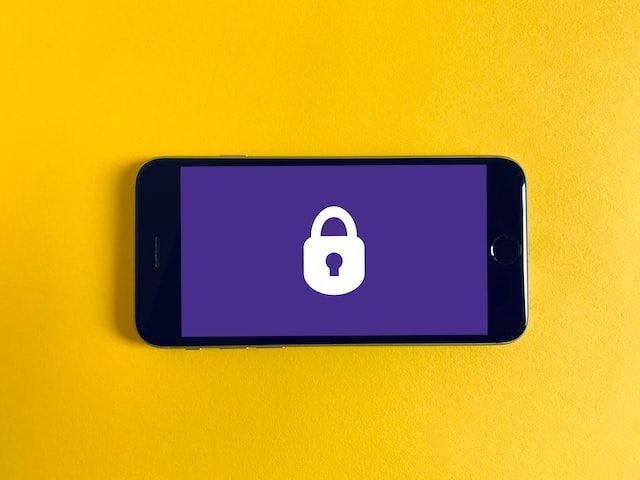Are you looking to send money overseas without having to deal with banks or other institutions? If so, using a wire transfer would be something to think about. Money may be sent across borders quickly and affordably through wire transfers. Before using this payment option, there are some things you should be aware of.
It can take up to three days for a wire transfer to clear, which means that the money may not be available immediately. Wire transfers also incur fees, so be sure to compare rates before making a decision.
Let's learn in detail about wire transfer and its related concepts. Take a look at the table of content ahead:
- Wire Transfer: What is it?
- Wire Transfer in Detail
- Working of Wire Transfer
- Different Types of Wire Transfer
- Different Uses of Wire Transfer
- Advantages and Disadvantages of Wire Transfers
- Associated Risks with Wire Transfers
- Alternatives of Wire Transfers
- Wire Transfer: How Safe Are They?
- What Details are Required for a Global Wire Transfer?
- Frequently Asked Questions (FAQs) Associated with Wire Transfers
- Bottom Line
- How Deskera Can Assist You?
Let's get started!
Wire Transfer: What is it?
A financial transaction known as a wire transfer involves moving money electronically from one bank account to another. It differs from an electronic transfer in which money is moved between accounts at the same financial institution. Wire transfers are secure, fast, and reliable, and are often used to send large sums of money quickly and securely.

When sending money through wire transfer, the recipient's name, account number, and projected amount are all transferred back and forth between two banks.
The person initiating the transaction often has to pay a transaction fee before the bank would transmit the money to the other party.
When the receiver has received the funds, the recipient's bank receives the information and deposits reserve funds into the account; the two institutions then settle the payments. There is no actual transaction of money.
Wire Transfer in Detail
Wire transfers, often called wire payments, make it possible to send money quickly and securely without exchanging actual cash. Even when parties are located in different (geographic) regions, they enable secure money transfers.
A transfer often begins between two banks or other financial entities. Instead of exchanging physical cash, the participating institutions exchange data on the receiver, the recipient's bank account number, and the transmitted amount.
The sender makes a full payment for the transaction at their bank. This party must provide the following info to their bank:
- The beneficiary's name, address, and phone number, as well as any other personal information required to complete the transaction.
- Information on the recipient's bank account, including branch and account numbers.
- Information regarding the receiving bank, such as the institution's name, address, and bank identity number (routing number or SWIFT code)
- The purpose or reason of the transfer
Once the information is documented, the wire transfer can begin.
The beginning business sends a message with payment instructions to the recipient's institution across a secure network, like Fedwire or SWIFT.
After receiving the information from the originating bank, the recipient bank deposits its own reserve funds into the appropriate account. After the money has been deposited, the payment is next finalized between the two banking institutions.
Wire transfers are essential tools when two parties need to send money swiftly and securely but are not in the same location.
Additionally, they let organizations to transfer big amounts of money. Transfer caps are determined by companies; however, they are typically fairly high. As an example, a business might use a wire transfer to pay for a significant purchase from a foreign vendor.
Working of Wire Transfer
A financial institution is initially approached by the individual or organization requesting a wire transfer to make a request to send a certain amount of money. The sender must include the recipient's SWIFT, IBAN, and BIC codes in order to inform the bank where to send the funds.
Before the transaction can be completed, the sender must deposit the money being sent, together with a transaction fee established by the sending bank. The sending bank then use a secure system like FedWire or SWIFT to transmit a message to clear the funds.
The notification instructing the recipient's bank to process the payment in line with the supplied instructions is sent to the bank once the funds have been cleared. The amount of time it takes for the money to reach the recipient's account after the sender started the transaction might range from several hours to days. To settle the payment, one of the banks must have a reciprocal account with the other.
Different Types of Wire Transfer
Following, we’ve discussed different types of wire transfer. Let’s learn:
Domestic Wire Transfer
Domestic wire transfers involve sending money electronically between two bank accounts located in the same nation. Although most often done online, these transfers can also be made by phone or in person.
Furthermore, domestic wire transfers are a secure, convenient way to transfer money, as they are completed almost instantly and involve minimal fees.

The transmission of money between two domestic banks or financial institutions is known as a domestic wire transfer. Almost always, domestic transfers are made using the Automated Clearing House (ACH) network.
A system of electronic payments and settlements between banks and other financial institutions is called the ACH network. It makes it possible to transfer money securely and safely across bank accounts.
When initiating a domestic wire transfer, the sender will need to provide the receiving bank with certain information, including the recipient’s name, bank account number, bank routing number, and the amount to be transferred.
The sending bank will also need to verify the sender’s identity and account information. The sending bank will then electronically transfer the money to the receiving bank after they have been validated.
For rapid, substantial payments, domestic wire transfers are frequently employed.
For example, they may be used to pay a large invoice, transfer funds to a family member, or to make a down payment on a home. This type of transfer is typically secure and reliable, as it is completed almost instantaneously and involves minimal fees.
International Wire Transfer
A wire transfer over international borders involves moving money from one bank or financial institution in one nation to another bank or financial institution in a different nation.

International wire transfers involve an intermediary bank, also known as a correspondent bank, which acts as a bridge between the two banks. The intermediary bank will receive the funds from the sending bank, convert them into the local currency of the receiving bank, and then transfer them to the receiving bank.
Furthermore, international wire transfers are often more expensive than domestic transfers and can take several days to complete. This is due to additional fees charged by the intermediary bank and the time it takes to process the transaction. In addition, international wire transfers are subject to foreign exchange rates, which can add additional costs.
To reduce the cost and time of international wire transfers, it is important to research the best rate, ensure all transfer information is correct, and be aware of any bank holidays in the countries involved.
Note: It costs about $43 to send money internationally via wire transfer from the US to another country. The recipient's bank deducts $8 to $10 from the money that was sent to them. Over and beyond the transaction fee they charge, certain banks may also levy additional hidden fees.
Other things that you must know:
Automated Clearing House (ACH) Transfer
Funds are electronically transferred from one bank account to another via the Automated Clearing House (ACH) transfer process. ACH transfers are a secure and reliable way to move money between accounts, as well as to and from merchants.
Using ACH transfers has a number of advantages. First, they are trustworthy and safe. Since the money is moved electronically, there is no chance of theft or misplaced checks. Second, they are fast.
Funds can be transferred in as little as one business day in most cases. Third, they are cost-effective. Sending an ACH transfer is typically a fraction of the cost of a wire transfer or other forms of payment.
You must supply the recipient's bank account information, including the account number and routing number, in order to send an ACH transfer. The transfer must then be started via your bank's mobile or internet interface. It normally takes 1-3 business days for the funds to move after the transfer has been started.
Overall, sending and receiving money electronically is made simple and affordable through ACH transfers. They can be finished quickly, securely, and with high reliability.
Same-Day Wire Transfer
A same-day wire transfer is a type of electronic payment service that allows funds to be transferred from one bank account to another within the same day. This method of payment is frequently used to cover expensive bills that need to be paid right away, such real estate acquisitions.
The process of a same-day wire transfer is relatively simple. The sender will provide their bank with the necessary information, including the recipient's bank name, routing number, and account number. The sender's bank will then confirm that the funds are available and will initiate the transfer.
The funds will then be sent from the sender's bank to the recipient's bank, usually within a few hours. The recipient will receive confirmation from their bank once the funds have been received.
Even though same-day wire transfers are safe and dependable, there are some hazards involved. Fees for this type of transfer can be high, and banks may charge additional fees for international transfers.
Additionally, if a mistake is made in entering the recipient's information, the funds may be sent to the wrong account, and may be difficult or impossible to recover.
Different Uses of Wire Transfer
Following we’ve listed two uses of wire transfer. Let’s learn:
1. Transferring Money
Before sending money to a receiver, "wire instructions" must be received. The wire instructions might be sent to the recipient by the bank where they anticipate receiving their payments.
Next, the sender notifies their bank of the instructions, the sum to be sent, and the transaction fee. Next, the sender must complete the wire transfer form. Alternatively, the bank may provide an online form that the sender can access and complete.
2. Receiving Money
To receive funds by wire transfer, the recipient must provide the sender with their bank account information and the "incoming wire instructions" from the receiving bank. The sender's bank will start the transaction and send the monies as soon as the information is supplied to the sender.
Depending on whether the transaction is internal or foreign, the money is frequently sent within a day. A transaction fee will be deducted by the recipient's bank from the transferred funds.
Advantages and Disadvantages of Wire Transfers
Following we will discuss both pros and cons of wire transfers. Let’s start!
Advantages of Wire Transfers
When it comes to wire transfers, there are many benefits. Let’s discuss:
1. Convenience:
Wire transfers are one of the most convenient methods of moving money from one place to another. They can be done quickly, with funds arriving in a matter of minutes as opposed to days when using other methods.
This further makes them particularly useful for time-sensitive payments, such as sending money to pay a bill or sending money to a family member in an emergency. Additionally, it cannot be held or bounced for lack of cash.
Note: Transfers inside the United States can frequently be completed the same day, depending on how soon you submit your request. Transfers across borders require an additional day or two.
2. Security:
One of the safest payment options is regarded to be wire transfers. The hazards connected with traditional payment methods like credit cards or checks are not present because money is sent directly from one bank account to another.

Furthermore, the sender's information is kept confidential, so even if the money is intercepted, it is almost impossible to trace back to the sender.
3. Reliable:
Wire transfers are considered one of the most reliable methods of transferring funds because they are conducted electronically and are typically processed immediately. Checks, on the other hand, can take days or even weeks to clear and can be subject to potential delays or fraud.
4. Low Fees:
Most wire transfers involve relatively low fees, especially when compared to other payment methods. Depending on the bank, fees can vary, although they are typically relatively reasonable.
5. International Transfers:
Wire transfers are also a great way to send money to people in other countries. Banks are able to transfer money from one country to another in a matter of minutes, and the exchange rates are often quite favorable. They are therefore a fantastic option to transfer money to friends and family who live abroad.
Remember: The funds may not appear in the recipient's account for several hours even though they are at the receiving bank. A bank employee might have to perform a few tasks in order to complete the transfer.
Disadvantages of Wire Transfers
Wire transfers have a number of benefits, but they also have a few drawbacks. As we learn:
1. Expensive:
Wire transfers can be expensive, especially for international transfers. Depending on the bank and the transfer amount, fees can range from around $25 to over $50.
2. Time:
Wire transfers typically take at least one business day to arrive, and sometimes longer. This can be inconvenient for those who need to transfer money quickly.
3. Security:
Wire transfers are not as secure as some other payment methods such as credit cards. It can be challenging to undo a wire transfer that was made to the incorrect account. Furthermore, once in motion, it is challenging to stop.
4. Complexity:
Wire transfers are more complex than other payment methods, such as checks and online payments. In some cases, additional paperwork may be required to complete the transfer.
5. Limited Availability:
Wire transfers are only available at certain banks and money transfer services. If you don't have access to one of these services, you will not be able to send a wire transfer.
6. Mortgage Wire Scams:
In mortgage wire frauds, hackers may target down payments, closing charges, and other wires to a title agency. If you receive wire instructions via email, in particular, you must always verify over the phone where the money is going to go.
7. Difficult to Verify Recipients:
If you wire money to an ambiguous destination or use a cash-paying service, it is difficult to establish who received the payments (such as Western Union or a retail "money transfer" shop). It could be difficult to identify the intended beneficiary, and the money could be stolen by someone using a fake ID.
Associated Risks with Wire Transfers
Generally speaking, wire transfers are safe as long as you are aware of the recipients. If using a reputable wire transfer service, each party to the transaction should be required to produce identifying evidence in order to prevent anonymous transactions.
All foreign wire transfers coming from the U.S. are monitored by the Office of Foreign Assets Control, a branch of the US Treasury. The group ensures that any money sent abroad won't be used to finance terrorism or money laundering. They are also in charge of stopping money from entering nations that are the target of American government sanctions.
The sending bank can freeze the money and halt the wire transfer if the agency judges any of these situations to be true.
Wire transfers may be highlighted for a number of reasons, alerting authorities to possible misconduct on the part of either the sender or the recipient under the following circumstances:
- Transfers to non-account holders
- Regular transfers for no viable reason
- Transferring funds to safe-haven nations
- Sending and receiving wires of the same value
- Large wire transfers from cash-based enterprises
Additionally, we’ve discussed few risks that are associated with wire transfers. Let’s take a look:
1. Fraud: Wire transfers are vulnerable to fraud due to the ease of transferring large amounts of money quickly. Fraudsters may try to gain access to a person’s account information or transfer funds without their knowledge.
2. Error: Errors can occur during a wire transfer, resulting in funds being sent to the wrong account. The money might not be recoverable if this occurs.
3. Cost: Wire transfers can be expensive since banks and other financial institutions frequently charge a fee for the service.
4. Delays: Wire transfers can be delayed due to a variety of factors, such as technical difficulties or the receiving bank not having the necessary information. This can cause delays in funds being received.
5. Non-Repudiation: Non-repudiation is a term used to describe a situation where a party cannot deny having completed a transaction. This means that a person who initiates a wire transfer cannot later deny that they did so.
Alternatives of Wire Transfers
The term "wire transfer" is widely used to describe various technological operations. Actually, most transactions are done electronically (even checks get digitized).
If you can't or don't want to send a wire transfer, you have the option to use these transfers. Compared to bank wire transfers, some of them take longer and offer less security.
ACH Transfers
These ACH-facilitated bank-to-bank transfers take place over the ACH network. A typical ACH transfer takes one to two days. Furthermore, these transfers can be undone, but only under specific conditions.
Money Transfer Services
Financial service providers like Western Union are autonomous businesses. For an in-person transfer, you can bring cash. This kind of transfer could take a few minutes or several days, depending on the circumstance.
The company gives the beneficiary cash as payment. The recipient can be identified by using personal information like name and address.
P2P Payment Tools
P2P services are typically easy to use and reasonably priced. Popmoney, Venmo, Zelle, and PayPal are among them. For each instrument, there are different transfer times. Popmoney, for instance, allows three-day transactions using a typical bank account.
They also have different strengths and weaknesses. You may use a different one if you are exchanging money, making a repayment, or making another type of transfer.
Wire Transfer: How Safe Are They?
There are worries about the security of internet money transfers because of the rise in bank fraud instances. Wire transfers are transactions between banks that take place before the funds are sent to the recipient's account.
Federal regulations stipulate that individuals must present identification documents and proof of address in order to open an account and use the wire transfer service in the United States. It basically ends the use of anonymous money transfers and prevents wire transfer fraud.

The security of internet money transfers has come under scrutiny due to a rise in bank fraud instances. Wire transfers take place between banks before the funds are sent to the recipient's account.
Anyone intending to open an account or use the wire transfer service in the United States is required by federal regulations to present identification and proof of address. It is practically forbidden to use anonymous money transfers, and wire transfer fraud is prevented.
What Details are Required for a Global Wire Transfer?
When sending a wire transfer, the bank frequently requests the data shown below:
- The sender and recipient's full names
- The recipient's and sender's phone numbers
- The recipient's Address
- Bank name and information for the beneficiary
- The recipient's checking account information
- International bank account number (IBAN), recipient's BIC, or their SWIFT code
Banks and other financial institutions can be found everywhere in the globe using SWIFT/BIC codes. These codes are frequently employed for SEPA payments, international wire transfers, and bank-to-bank communications.
You can enter this information online or in person at a branch. Additionally, your financial institution might ask you about the reason behind the money transfer.
Frequently Asked Questions (FAQs) Associated with Wire Transfers
Let's now address some common frequently asked questions (FAQs) that may come to mind when working with wire transfers.
Que 1: How long does a wire transfer take?
Answer: Although they typically go much more rapidly, domestic bank wire transfers can take up to three days, even if both the sender and the destination use the same banking institution. It could take up to five business days for international wire transactions to process and clear completely.
However, a variety of elements might have an impact on how long wire transfers take overall. Obstacles and delays that last up to three weeks may be brought on by bank holidays and other occasions.
Que 2: What Distinguishes a Bank Transfer from a Wire Transfer?
Answer: Bank transfers and wire transfers are not the same thing, despite the fact that some people may use them interchangeably. An ACH transfer, which is a way to move money from one bank to another using the Automated Clearing House, is also known as a bank transfer.
Compared to wire transactions, these bank transfers are typically slower. However, bank transfers function effectively with services like direct deposits and direct payments to suppliers.
Que 3: When Should I Make the Use of Wire Transfers?
Answer: Wire transfers are regularly used for both domestic and international transactions in the US. They are ideal for cross-border transactions because they can easily be converted to another currency if necessary. The requirement to transfer huge sums of money quickly is among other factors.
While most domestic transfers are completed the same day, there are several occasions when overseas transactions are executed swiftly (the time period depends on the country).
Although they may differ based on the payment processing business, limits are frequently strict. Wire transfers are frequently used to complete real estate transactions, pay bills, and send money to family members.
Que 4: How do you Send Money via Wire Transfer Online?
Answer: You can use the online accounts of several banks to make wire transfers. You may also need to register for the online wire service in addition to opening an online account. Visit your bank's online banking page for more details.
Que 5: What Time Do Wire Transfers Occur?
Answer: The lag periods for processing wire transfers vary between banks. Contact your bank for further information about cutoff times and when the recipient will be able to access the funds.
Que 6: Is it Safe for Me to Use Wire Transfer?
Answer: Wire transfers are generally secure as long as you are informed of the beneficiaries. Each party should be obliged to provide identification information when utilizing a reputable wire transfer service in order to prevent anonymous transactions. The organization ensures that funds sent abroad aren't used for terrorism or money-laundering activities.
If the sending bank has grounds to believe that any of these scenarios is true, it has the right to stop the wire transfer and freeze the funds.
Wire transfers may be reported for a variety of reasons, alerting authorities to potential fraud on the part of either the sender or the recipient.
Que 7: What Else do I Need to Know?
Answer: You should include details about your account and the account to which the money is being sent when sending a wire transfer. This information will include:
- Banks' names
- ABA routing numbers and account numbers
- The names of the account holders.
Some institutions have additional criteria for sending wire transfers of larger amounts of money. You could even need to employ written documentation, either electronic or physical, and telephone wire transfer confirmation in order to secure your request.
When submitting an ACH transfer, you must use a form provided by the company you are paying or the specific service you are using. Usually, less information is necessary than for a wire transfer.
Furthermore, you might simply need to include the recipient's email address or phone number, for instance. It is the recipient's responsibility to supply details about their bank account.
Bottom Line
Wire transfers are an efficient and cost-effective way of transferring funds both domestically and internationally. They are secure, fast, and reliable, and can be used for a variety of purposes, such as making large payments to suppliers, paying for international purchases, and sending money to family and friends. Wire transfers are also often used for more time-sensitive payments, such as in the case of emergency funds.
Overall, wire transfers can be a great choice for those looking to transfer funds quickly, securely, and reliably. They are generally easy to set up and can be used to send funds to almost any country in the world.
However, it is important to remember that wire transfers can be expensive and that the costs can vary depending on the financial institution, the amount of money being transferred, and the country where the funds are being sent.
Remember: With this in mind, it is important to research the different options available before deciding on the best way to transfer funds.
How Deskera Can Assist You?
Deskera's integrated financial planning tools allow investors to better plan their investments and track their progress. It can help investors make decisions faster and more accurately.

Deskera Books enables you to manage your accounts and finances more effectively. Maintain sound accounting practices by automating accounting operations such as billing, invoicing, and payment processing.
Deskera CRM is a strong solution that manages your sales and assists you in closing agreements quickly. It not only allows you to do critical duties such as lead generation via email, but it also provides you with a comprehensive view of your sales funnel.
Deskera People is a simple tool for taking control of your human resource management functions. The technology not only speeds up payroll processing but also allows you to manage all other activities such as overtime, benefits, bonuses, training programs, and much more. This is your chance to grow your business, increase earnings, and improve the efficiency of the entire production process.
Final Takeaways
We've arrived at the last section of this guide. Let's have a look at some of the most important points to remember:
- A financial transaction known as a wire transfer involves moving money electronically from one bank account to another. It differs from an electronic transfer in which money is moved between accounts at the same financial institution.
- Wire transfers, often called wire payments, make it possible to send money quickly and securely without exchanging actual cash. Even when parties are located in different (geographic) regions, they enable secure money transfers.
- A financial institution is initially approached by the individual or organization requesting a wire transfer to make a request to send a certain amount of money. The sender must include the recipient's SWIFT, IBAN, and BIC codes in order to inform the bank where to send the funds.
- A same-day wire transfer is a type of electronic payment service that allows funds to be transferred from one bank account to another within the same day. This method of payment is frequently used to cover expensive bills that need to be paid right away, such real estate acquisitions.
- Domestic wire transfers involve sending money electronically between two bank accounts located in the same nation. Although most often done online, these transfers can also be made by phone or in person.
- The funds may not appear in the recipient's account for several hours even though they are at the receiving bank. A bank employee might have to perform a few tasks in order to complete the transfer.
- A wire transfer over international borders involves moving money from one bank or financial institution in one nation to another bank or financial institution in a different nation. International wire transfers involve an intermediary bank, also known as a correspondent bank, which acts as a bridge between the two banks.
Related Articles












